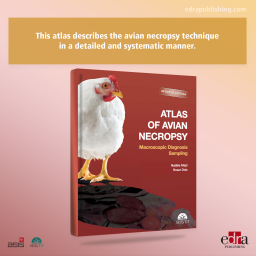PET OWNER EDUCATIONAL ATLAS: Dogs Second edition.
The second edition of this educational atlas on dogs expands on its initial goal of helping veterinary surgeons communicate with owners by adding to the content of the first edition with 16 new sheets. Needless to say that the previous content has been revised and updated with the latest developments in each area.
Review and texts:
ALBERTO BARNETO CARMONA
Alberto Barneto obtained a degree in veterinary medicine from the Complutense University of Madrid. He is a coowner of the Ayavet veterinary clinic (Boadilla del Monte, Madrid).
KEY FEATURES:
➜ Clear, precise sheets explaining the specific anatomical, physiological, and pathological characteristics of dogs.
➜ Highly effective techniques for transmitting information to owners.
➜ This atlas makes an excellent tool for everyday clinical use thanks to its clear presentation and ease of use.
Table of contents:
1. Anatomy
Skeleton of the dog
Muscles of the dog
Internal organs of the dog
Circulatory system of the dog
2. Main disorders by system
Musculoskeletal system
Joint osteochondrosis
Elbow dysplasia
Hip dysplasia
Vertebral disorders
Avascular necrosis of the femoral head
Rupture of the anterior cruciate ligament (RACL)
Urogenital system
Acute and chronic kidney disease
Urinary calculi
The oestrus cycle of the female
Neutering in males and females
Most frequent types of dystocia in dogs
Pyometra
Ovarian diseases
Vaginal hyperplasia and prolapse
Pseudopregnancy
Mammary tumours
Benign prostatic hyperplasia (BPH)
Cryptorchidism
Cardiorespiratory system
Dilated cardiomyopathy
Congenital heart diseases
Acquired valvular disease
Hypertension
Interventional techniques and devices
Acquired diseases of the larynx and trachea
Brachycephalic syndrome
Peritoneal-pericardial-diaphragmatic hernia
Pneumothorax and pleural effusion
Endocrine system
Diabetes mellitus in dogs
Hyperadrenocorticism
Hypoadrenocorticism
Hypothyroidism in dogs
Skin and adnexa
Skin structures in dogs
Ectoparasites
Types of mange
Fungal and yeast infections
Hypersensitivity
Impetigo and pyotraumatic dermatitis
Otitis externa
Immune-mediated and autoimmune diseases of the skin
Digestive system and abdominal cavity
Dental anatomy of the dog
Periodontal disease
Diseases of the salivary glands
Main diseases of the oesophagus
Gastric dilation and volvulus syndrome
Gastrointestinal foreign bodies
Most common canine intestinal parasites
Pancreatitis and exocrine pancreatic insufficiency
Hepatitis
Portosystemic shunts
Perianal disorders
Hernias
Nutrition and related digestive diseases
Eyes
Structures of the eye
Keratoconjunctivitis sicca (KCS)
Corneal ulcers
Degeneration of the lens
Eyelid and eyelash disorders
Nervous system
Central, peripheral and autonomic nervous systems
Cognitive dysfunction syndrome (CDS)
Peripheral and central vestibular syndrome
Seizures and epilepsy
Haematopoietic system and oncology
The anaemic dog
Canine lymphoma
Canine mast cell tumour
Canine haemangiosarcoma
3. Infectious diseases
Canine leishmaniasis
Filariasis
Infectious diseases transmitted by ticks
Canine parvovirus
Canine distemper
Leptospirosis
Kennel cough
Rabies
Vaccination plan
SARS-CoV-2 infection in dogs
4. Special techniques
Nail trimming
Problems caused by grass awns
How to administer drugs
5. Behaviour and management
Reproductive behaviour
Typical postures in dogs
Handling and care of newborn puppies












